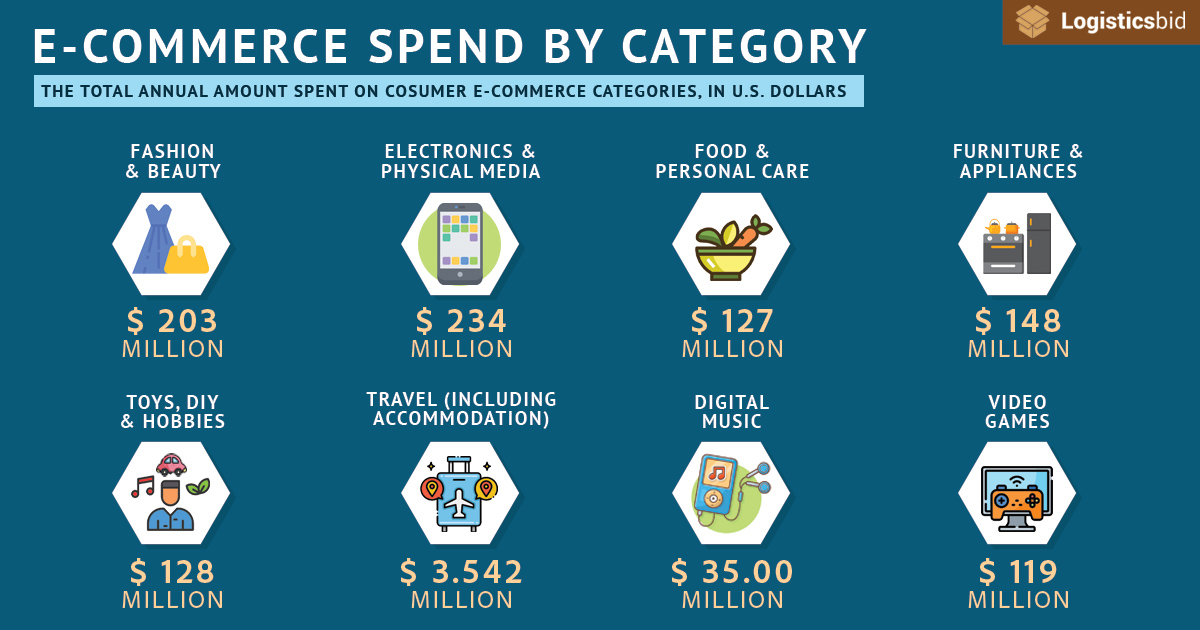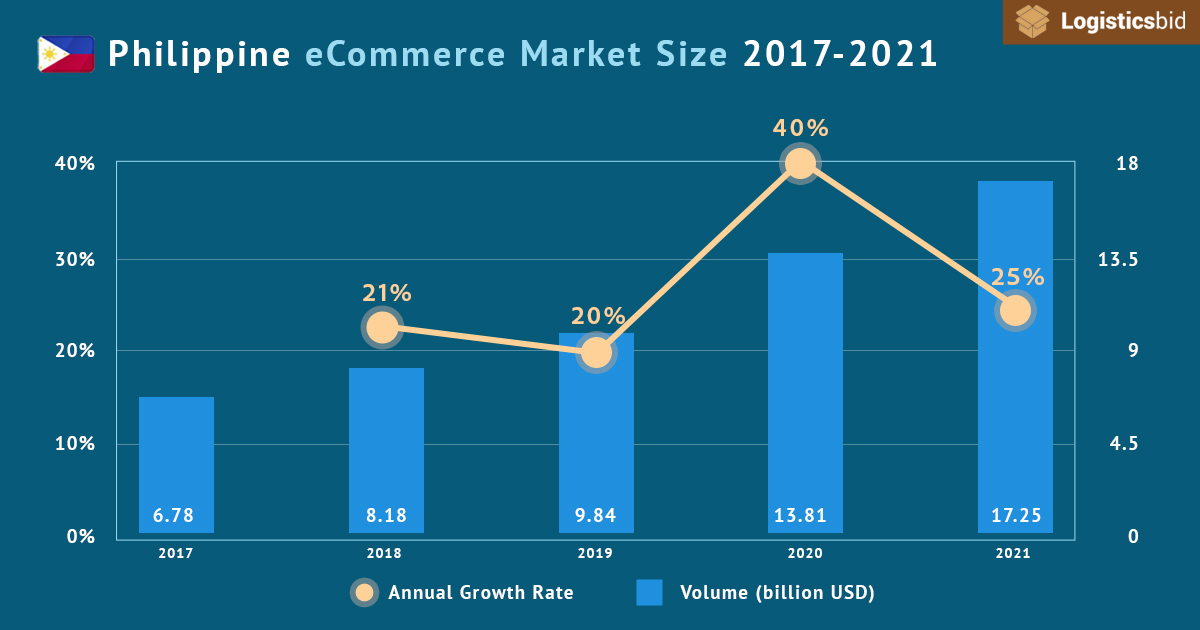
E-commerce has a lot of potential, even though it may not be as developed in the Philippines as it is in Malaysia and Indonesia. Only 1% to 2% of all sales in the nation are thought to occur through internet transactions, according to estimates. Google, however, projects that by 2025, the Philippines’ consumer goods online economy will have grown from US$3 billion in 2019 to US$12 billion.
For eCommerce merchants, the Philippines represents a huge potential market trends. It’s important, however, to understand both the commercial and cultural factors that drive Philippine online consumer habits.
The Philippines’ Major Online Shopping Days
The busiest shopping months are November and December, coinciding with the receipt of the 13th-month pay and heightened holiday spending. Other significant sales periods include the summer months of March, April, and May, when Filipinos also celebrate Holy Week, a time for both religious observances and domestic travel.
Of the country’s top 10 most visited websites, one eCommerce in the Philippines made the list—Lazada. According to iPrice Group, Lazada Philippines receives 32.82 million web visits a month, twice as many as that of its closest competitor, Shopee. However, Shopee is the top downloaded eCommerce app on both Android and iOS devices.

The leading consumer habits product category for online shopping, according to Hootsuite, is Electronics & Physical Media totalling US$234 million in sales, while Fashion & Beauty product spend reached $203 million. If we count non-consumer goods, Travel is the leading product category, accounting for US$3.5 billion in eCommerce in the Philippines spending in 2019.
Want to catch the Philippine market trends during their top online sales periods? Come have a chat with us to find out how you can ship your eCommerce sales into the Philippines with our end-to-end cross-border shipping services.
Online Revolution
The Online Revolution campaign is an adaptation of Lazada’s 11.11 sale extending all the way to 12.12. While the biggest deals are offered on 11.11 and 12.12, this event is a month-long sale.
Lazada and Shopee were also among the most discussed topics on social media. In 2018, Lazada put up 20 million product discounts11 on 11.11—equivalent to one-fourth of all products listed on the website. These deals included items sold for ₱1 only. On 12.12, they ran a Christmas deal special, with a section dedicated to gift items and gift baskets.
As for 12.12, Lazada Philippines reported that 6.6 millions items were sold in just the first 24 hours in 2019. In a December 2018 survey by Picodi, a provider of eCommerce in the Philippines, 91 percent of respondents said they intended to participate in the 12.12 sale. Gift-buying, whether for themselves or for others, was the main purpose of 65 percent of these shoppers. Top product categories were clothes, electronics, cosmetics, groceries, and footwear.
Philippines’ Long Shopping Seasons
Christmas
Christmas is a major deal in the Philippines and is undoubtedly the country’s biggest holiday. A Facebook Holiday Study revealed that Filipinos tend to spend an average of ₱17,000 during Christmas. Forty percent of mobile-first shoppers, however, will spend more than that amount.
The country is said to have one of the longest Christmas seasons in the world15, with malls playing Christmas songs and advertisers, including Shopee and Lazada, beginning to tease promos as early as September.
The actual shopping, however, takes place in November and December. When local news publication Rappler surveyed their readers, they found that 55 percent identified December as the heaviest shopping month16, while 24 percent chose November.
As a merchant of eCommerce in the Philippines, that means you need not worry about missing the boat if you only begin your promotions in November. Unless, that is, your competitors have begun much earlier, or you want to beat the marketing noise by being one of the first on the scene.
Another factor that has spurred participation of eCommerce in the Philippines during the Christmas season is vehicle traffic, which has become increasingly heavy in recent years.
Summer
The summer months of March, April, and May comprise another peak shopping season in the Philippines. This is the time when students in most schools go on summer break. This is also a peak period for domestic travel17, especially during the long holiday during Holy Week.
Holy Week tends to take place in March or April, depending on the Catholic liturgical calendar. This year, it will run from April 14 to April 20. With Catholics making up more than 86 percent18 of the Philippine population, Holy Week is widely celebrated in the country through fasting, solemn processions, and religious rituals. Being a public holiday that takes place in the summer, though, it’s also considered an opportunity for Filipinos to travel to beach destinations and to the countryside.
During Holy Week and the summer months, Filipino online shoppers are most interested in apparel and home appliances, according to iPrice Group19. Online merchants selling summer clothing, swimwear, and fashionable sunglasses and accessories can take advantage of this season by ramping up their marketing and promotion efforts.
Around Labor Day, when merchants take advantage of the final few days before parents must pay for their children’s tuition during the school enrollment season, summer shopping usually peaks. In the Philippines, May 1st, Labor Day, is also observed as a public holiday. Lazada, for example, holds a Labor Day sale together with partners, such as banks.
Other Noteworthy Events for eCommerce in the Philippines
Black Friday & Cyber Monday
Although Thanksgiving is barely celebrated by locals, eCommerce giants like Lazada have brought the Black Friday and Cyber Monday sales to Philippine online shoppers. Taking place right after Thanksgiving—which is held on the fourth Thursday of November—Black Friday and Cyber Monday offer shoppers discounts.
These aren’t major shopping events, though, given their lack of cultural significance and their timing between Online Revolution and Christmas. But they still draw large volumes, as they typically take place on the weekend after the month-end payday. It’s also an opportunity for those who missed the Online Revolution to get their hands on good deals.
9.9 Shopee Super Shopping Day
Globally, Shopee achieved a record performance during 9.9 2019, with a peak sales volume of 187 thousand orders in a minute.
In 2018, the three top-selling items in the Philippines during 9.9—a type of lipstick, a whitening soap bar, and an ultra SD card—were in the Health & Personal Care and Mobiles & Accessories categories. Home & Living also performed well.
Lazada Birthday Sale
Lazada’s Birthday Sale takes place usually from March 21st onwards, but it took place from April 25 to April 27 in 2018. Unfortunately, this event sometimes falls on what speakers of the Tagalog language call ‘petsa de peligro’, a term that translates to ‘day of danger’. This is because it comes just right before their monthly payday at the end of the month.
Don’t be quick to dismiss this event, though. Keep in mind that Lazada is the country’s biggest eCommerce platform. In 2017, search interest for Lazada increased during the birthday sale weekend25. Also, Lazada Birthday Sale also falls right in the midst of summer, which is one of the Philippines’ peak shopping seasons. Online merchants who sell popular summer product categories, such as clothing and home appliances, can push promotions during this event.
To help you recap all of the hottest sales periods in the Philippines, here’s a handy infographic:

Types of promotions merchants can run
Cashback
Consider getting onboard cashback and rewards platforms like ShopBack26 and Zap27. These incentives don’t have to be large amounts. Cashback offers on ShopBack, for example, tend to be small in value but can add up if buyers make more purchases.
Product bundles
Offer bundles to improve product discoverability by including less popular items with a purchase top-selling products. The best bundles consist of items in the same product category—for example, cosmetics.
Coupon/voucher codes
Online merchants can sell coupon codes or voucher codes that give consumer habits access to product discounts. By selling these codes well in advance of a sale, you can more easily predict product demand. This will help you deal better with the perils of eCommerce delivery during the festive season.
Payday promos
Offer promotions during payday time. In the Philippines, most workers receive their salaries twice a month, on the 15th and 30th or 31st.
Keep in mind that salaries may sometimes come a day or two early. For instance, if the last day of the month falls on a Sunday, employees may receive their salaries two days earlier, on Friday.
Social media promos
Out of the 76 million Internet users in the Philippines, almost all use social media. So it’s no surprise that most merchants in the country prefer social media as an eCommerce platform. By running promos through social media—especially the two most popular networks, Facebook and YouTube—online merchants can target and reach Filipino online consumer habits.
Simple promos include discounts for those who ‘like’ your Facebook page or a freebie for the winner of an online quiz.
Know your Market Trends
The Philippines shares many things in common with other Southeast Asian countries, such as its Malay and Indonesian heritage, local groups with Chinese descent, and a vibrant Muslim community in its south. However, its long history of Spanish and American colonisation has also given it some cultural nuances that it may not share with most of its neighbours.

If you’re an online merchant in Southeast Asia, don’t be daunted by a market trends that you might not know or understand well. The key is to do research and to test out the response to your product. A flexible logistics setup, such as the use of cross-border shipping, will allow you to sell your goods in the Philippines without the commitment of opening a warehouse there.
